I’m in a modern art gallery by a lake. A chic gallery owner shows me the work of a young contemporary artist: squares of earth, found objects and enormous paintings made of fingerprints. The title of the exhibition is something Google Translate calls “Been-Continued.” It’s all quite mysterious. Then the artist herself, Lâm Na, appears, pressing a coin into my hand that she dug out of the ground. This feels meaningful because I understand that the work is about the past in the present, what is sown and what is reaped, but in reality I have very little idea of where I am. It could be Mayfair. It’s actually Hanoi.
This is my first day in Vietnam, in a chic part of the city where many expats choose to live, next to Hoan Kiem Lake. There are taco restaurants and cocktail bars. Whatever I expected, this wasn’t it. To confuse me even more, the charming Nguyen Anh Tuan, an artist and curator, tells me that I am lucky. We had bonded over a shared love of Leonard Cohen and now he takes me to the enormous, disused Gia Lam train factory. It has been adopted by artists from the Hanoi Creative Design Festival. The theme is ‘flow’ – and I go along with it.
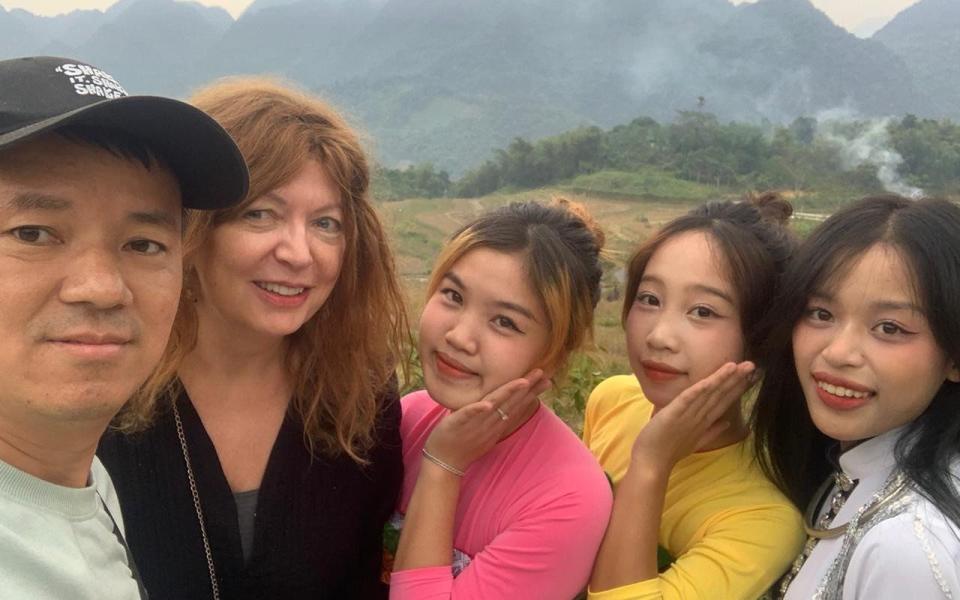

By taking over this old industrial space, artists connect their heritage with contemporary life. There’s so much work on display here: dismantled Cornelia Parker-type cars on strings, huge hanging ribbons of fabric, tunnels with little pictures that you need a candle to see. I’m overloaded.
The truth is, if your first day in Hanoi doesn’t overwhelm you, you don’t have a pulse. It’s one of the most exciting cities I’ve ever visited, a frenzy of traffic, markets, lights, street food, colonial-era architecture and enormous monuments. I brave the schools of scooters and the intense criss-cross traffic to get around, determined not to be like a friend of mine who was stuck in her hotel for two days before she dared venture outside.
When I meet my guide, he offers to teach me how to cross the road and is surprised that I have already done so. The explanation is not courage but jet lag. You shouldn’t hesitate or look at the traffic, he says. Just go for it and don’t stop. My guide is wearing a sweatshirt that says ‘Barmy’ on it and he asks me what that means as we sample the street food. Barmy means ‘crazy, but in a fun way’, I tell him.
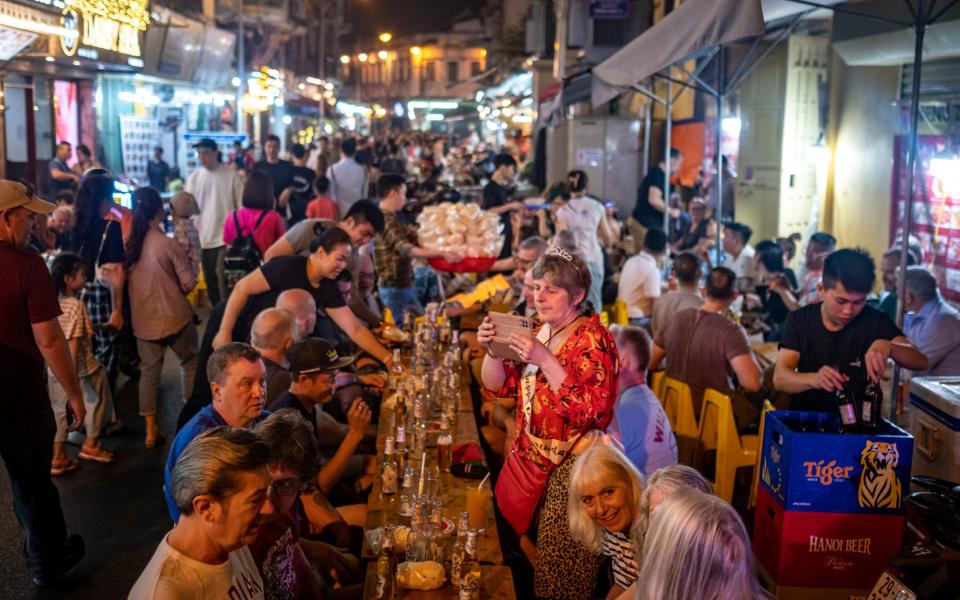

You may have eaten Vietnamese food at home, but there’s nothing like sitting on little plastic stools next to girls wearing fake Gucci and eating what has become known as the ‘Obama Combo’ (after the meal Barack Obama ate with the late, great Anthony Bourdain here, in 2016). Grilled pork, noodles, bunches of herbs, dipping sauce. Bun Cha and two beers.
The ripped martial arts boys slurp it nearby; the backpackers are queuing for their Banh Mi. Later, at a dazzling rooftop bar, young, fashionable Vietnamese couples arrive with flowers for countless selfies as the DJ remixes the Pet Shop Boys and the moon rises high over the lake.
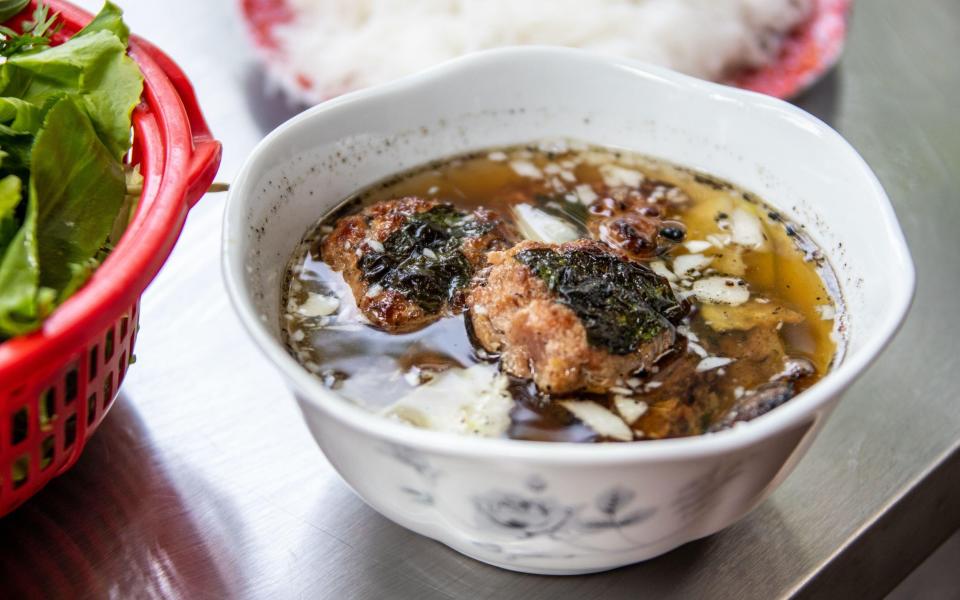

In the morning, large groups practice next to the Lenin statue, while lines begin to form in front of the Ho Chi Minh Mausoleum. Here you may see the embalmed body of “Uncle Ho”. (He didn’t want this; he had asked for a cremation, but got the full Soviet treatment instead.) Communist flags and slogans are everywhere.
Vietnam is a one-party state, although the official reality is that it is “a market economy with a socialist orientation.” Ordinary people pay for healthcare and education and when they leave Hanoi you feel the economic boom. Luxury developments are everywhere. I come to realize that the difficult times referred to in the conversations are not just the “American War,” but the famine that occurred between the end of the war in 1975 and the lifting of the trade embargo in the mid-1990s.
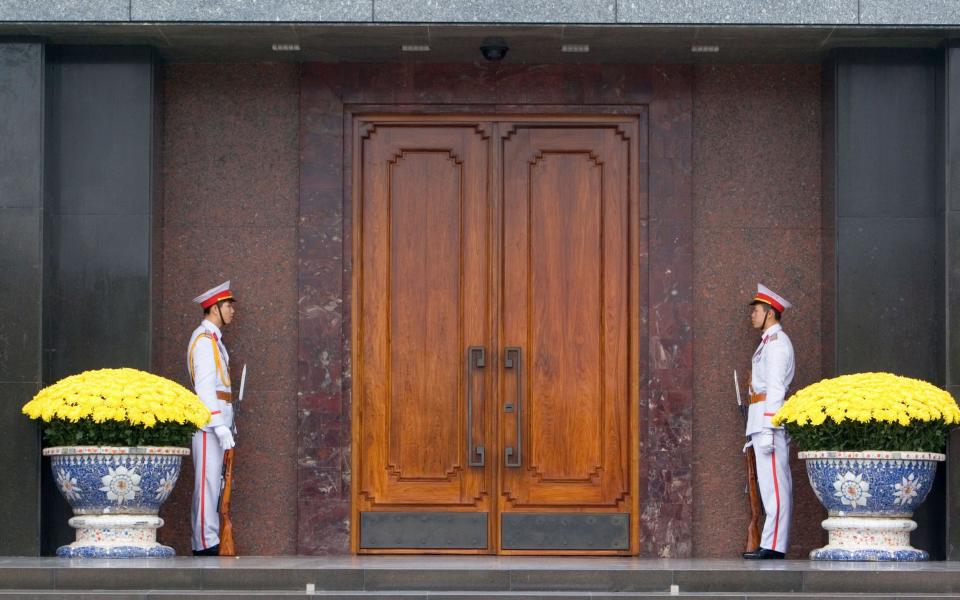

Of course there are war tourists who rehearse here Apocalypse now speeches, but most of the hostility I hear expressed openly is directed at the French, not the Americans. One man tells me that the country’s former colonial masters put out his father’s eyes.
A few hours’ drive southwest of Hanoi, mountains rise: black vertical points of limestone protruding from the earth, the likes of which I have never seen before. I stay at the Pu Luong Retreat between two such mountains overlooking rice terraces. The view is spectacular, although the steep slopes to get to the room are not that appealing. This is no country for old knees. Luckily there is a pool, a spa and a great restaurant.
It’s the kind of place that lures trekkers, but my guide clearly understands that I’m more of a trudge. We descend into the valley where houses stand on stilts and impossibly pretty village girls take selfies with us.
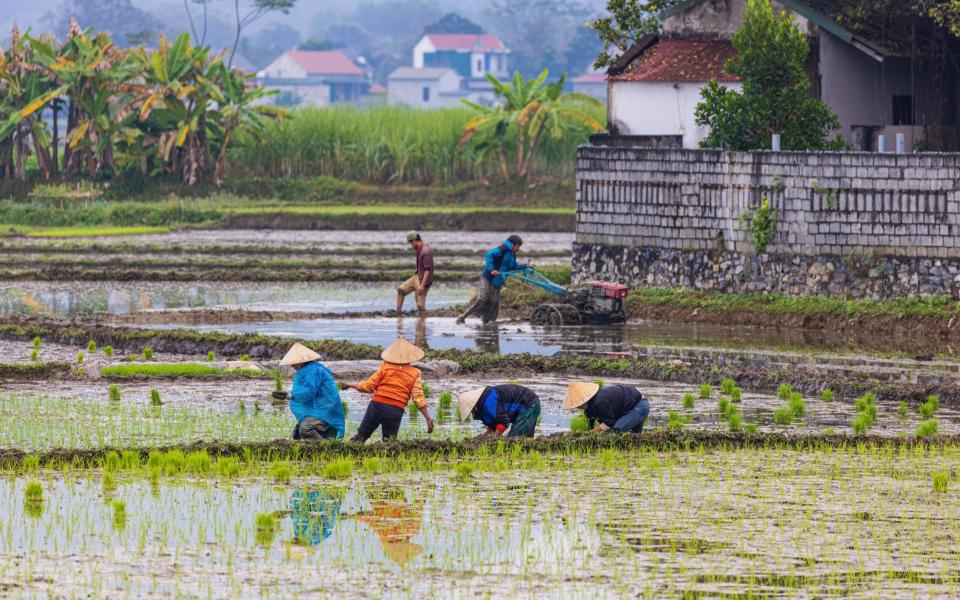

I can’t help but think of Graham Greene A quiet American in which Fowler describes Phuong, his mistress, as looking “so small and fragile” but not an ornament in any way. These villagers are ethnic white Thais and have their own language and clothing style. They still use scythes in the fields.
We see papayas, star fruits, guava, cassava all growing and the muscovy ducks that I have only seen hanging in markets. Near a betel nut tree I hear about the Vietnamese fashion where women completely blacken their teeth – mind-blowing – which was once considered beautiful.
I’m flying south for a cruise along the Mekong. It’s warm and rainy, with a very different atmosphere. There are fish in the river that eat dogs, the skipper says, as we sip coconuts. But I only see mudskippers. In the evening you can sit at my resort on the river and watch the junks go up and down. I won’t stay long, because I’m going to Can Tho, to take a small propeller plane to Con Son Island.
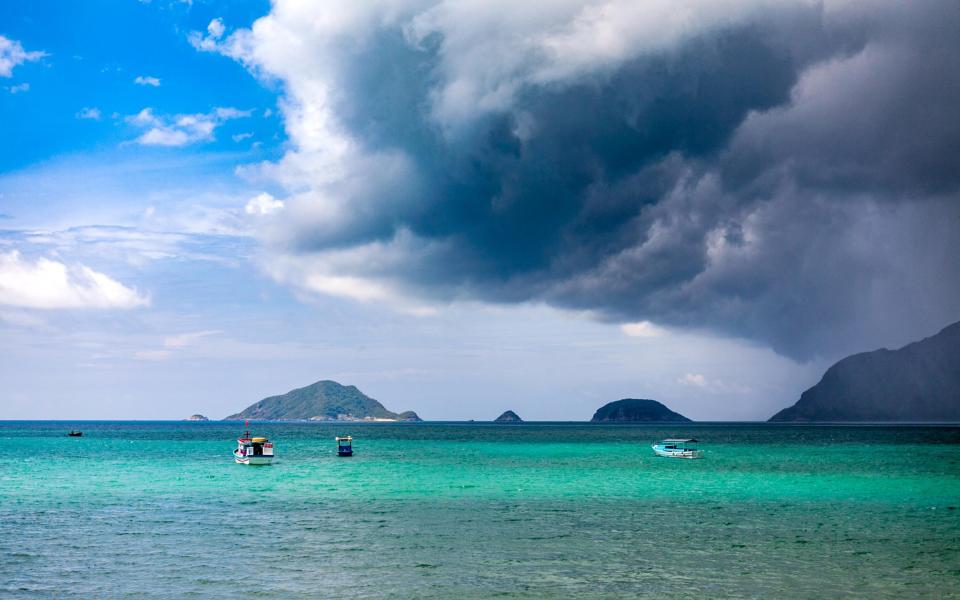

At the airport I wave to a baby and I notice that everyone feels uncomfortable. Babies, I am later told, should be ignored because you don’t want to make the ghosts jealous and make the baby sick. Every day in Vietnam I become more aware that the spirits are always present: ancestor worship predominates; death stands next to life and is celebrated everywhere. The dead must be appeased with votive money, gifts and food at the family shrines. I even see expensive pairs of sports shoes lagging behind in supply.
Con Son is a small island in the Con Dau archipelago. It’s heavenly, full of pristine beaches, jungle, black squirrels and macaques. Brad, Angelina and their posse stayed here in 2011 at the ultra-luxurious Six Senses, but I honestly don’t think anything could be nicer than the Poulo Condor resort, where I’m staying.
My room is actually a sage green villa with two balconies. There is an outdoor shower and lotus ponds everywhere. You can go to the empty beach or get a massage. There are kayaks to paddle around in. It is utterly lush, with a swimming pool above which rises Chau Mountain. The staff are lovely, WhatApping to ask if you would like breakfast brought to you. These islands are surrounded by some of Vietnam’s best diving waters yet remain undeveloped.
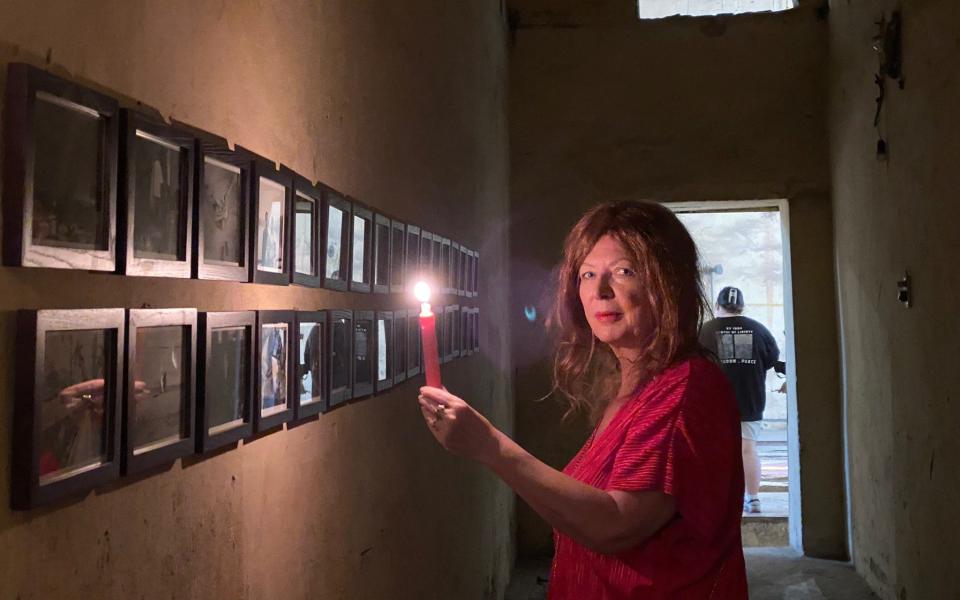

However, this seemingly untouched paradise has a heart of darkness. This was a prison island. There is a museum in the city, and old prisons and cemeteries are everywhere. More than 20,000 political prisoners died here. The French built the prisons in 1863 to house those they considered dangerous. The Americans then used them until the 1970s. Here you will find the infamous ‘tiger cages’, where prisoners were chained and quicklime was poured over them.
Visiting these places for a few hours was enough for me. It was clear that many of the Vietnamese visitors had relatives who had died there, so this is a place of pilgrimage. When I got back to my hotel, I discovered that the museum was founded by the son of a political prisoner and that this was a way of saying thank you to the island.
This is how modern Vietnam exists, where life and death run parallel. There are always hungry ghosts to appease, but here and now there is beauty and wealth to create. And there’s always another selfie to be taken. It’s staggering. During a cooking class I learned to tie summer rolls with steamed scallions as small ribbons. I saw girls applying makeup to Vespas as they maneuvered through heavy traffic. I caught a glimpse of the ultra-modern city of Ho Chi Minh City and chatted with octogenarians working in the rice fields.
It all attracts you in one way or another. You can feel the future rising, but what really seeps into your heart is the remarkable and unbreakable soul of the place.
Essentials
InsideAsia (0117 244 3380; InsideAsiaTours.com) has a 12-night cultural adventure at Vietnam Landscapes, which goes from Hanoi to Pu Luong, Ho Chi Minh City and the Mekong Delta and costs from £2,275 pp, including all accommodation, various meals, in-country transport, private guides and a range of cultural experiences, but excluding international flights. Vietnam Airlines (vietnamairlines.com) operates daily flights between London and Vietnam from £754 return.